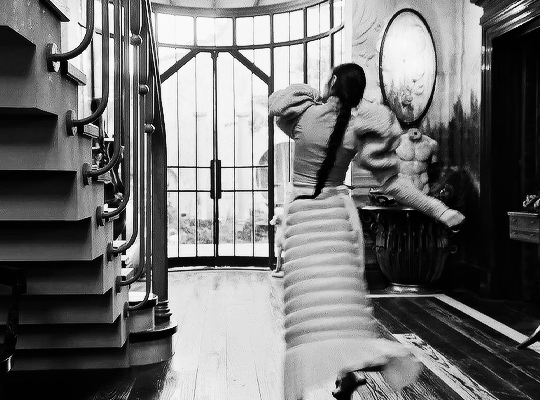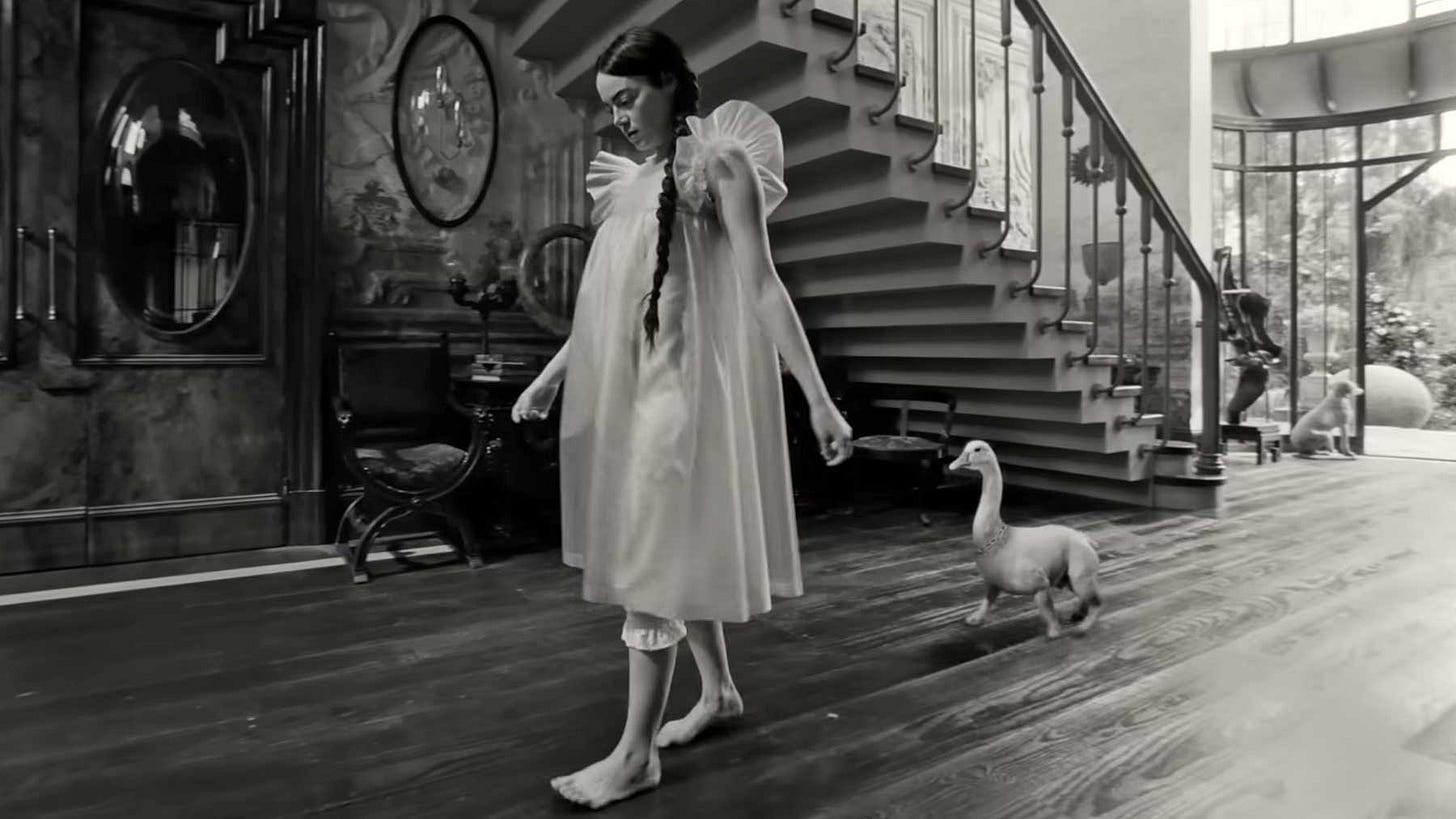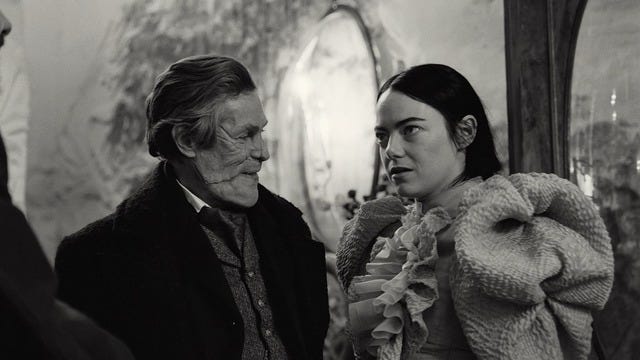Poor Things has been described as a “Feminist Frankenstein” and a “Bizarro Barbie.” Plot aside (which will be 100% spoiled if you read this post), this movie has stunning costumes. Every time Bella Baxter came onscreen in a new outfit I was squealing. The way I RAN to my computer after getting home and immediately starting googling “leg of mutton sleeves” and “chartreuse silk skirt.”
For a movie with such fabulous fashion, I haven’t seen very much internet fervor about it. There hasn’t been a Bella Baxter-core in the same way there was the loud and inescapable Barbie-core. My hypothesis is that the fashion in Poor Things is LESS commercially marketable and MORE slow fashion friendly because of the painstaking effort required to curate items spanning multiple time periods. Bella’s style is mashup of everything from Victorian steampunk pieces to 60s space age boots to haute couture ruffle dresses. That’s not easy to source! The silver lining is, I hope it doesn’t get the fast fashion treatment the way Barbie did.
Ok, let’s dive in! Lots of secondhand pieces (but some new) linked.
The first scenes of Bella portray how she’s an infant in a grown woman’s body. She skips and twirls chaotically around the mansion, babbles her words and drops her prepositions. I loved her lobster tail skirt, it’s giving mermaid vibes which matches the whole nautical exploration theme in the set design. And it’s a nod to the chimera pets she grew up with…every being in her world has been stitched up from separate beings.
How to get the look:
smocked and quilted fabrics
plain whites and neutrals
childlike, fanciful shapes that are easy to move in
Bella has a nanny who dresses her. This emphasizes her “infant”/”child” identity, as she requires a caretaker. She walks barefoot, her hair is worn in one long braid.
How to get the look:
big, floofy shapes—fabrics do not cling to the skin
glorified pajamas
anything that looks like a duvet
A turning point in Bella’s development is her insistence in going outside. She becomes aware that she lives a very confined life. Dr. Godwin reluctantly brings her to a picnic in their steampunk horse-head carriage. Chaos ensues and she asserts her will. We see this shift in her character: she has desires and exercises power in the ways she can to get what she wants.
In her first “outside” outfit she is a bit more dressed up to reflect Victorian society standards.
How to get the look:








